
Roots
A quiet whisper upon the scalp, an unbidden prickle, or a persistent unease beneath the soft drape of a head covering—these sensations often arise from a subtle, yet profound, dialogue between our scalp’s delicate ecosystem and the world it encounters. This experience, while often personal, speaks to a deeper interplay of biological design and environmental influence. It beckons us to consider the very foundations of our hair’s home, the scalp itself, and how its intricate balance can shift when adorned.
The scalp, a living canvas for our strands, possesses a unique physiological architecture. Here, a dense concentration of hair follicles, each a miniature organ, anchors individual hairs, simultaneously housing sebaceous glands. These glands produce Sebum, a natural oil that serves as a protective layer, maintaining the skin’s barrier function and contributing to the hair’s inherent sheen.
Beneath this surface lies a network of nerve endings and blood vessels, rendering the scalp exquisitely sensitive to its surroundings. The vitality of our hair directly mirrors the health of this underlying terrain; a nourished scalp fosters strong, vibrant growth, while disruptions can lead to a spectrum of discomforts.
When a head covering becomes a regular companion, it introduces a distinct microclimate, altering the scalp’s natural state. This enclosed environment can significantly influence factors like temperature, humidity, and airflow, all of which play a pivotal role in scalp well-being. The consequences of this altered environment are not always immediately apparent, often manifesting as subtle changes that accumulate over time.
The scalp’s innate sensitivity stems from its rich network of nerve endings and its dynamic microbial landscape.

Understanding the Scalp’s Delicate Balance
The scalp is a bustling microbial city, home to a diverse community of bacteria and fungi that typically coexist in a harmonious equilibrium. This collective, known as the Scalp Microbiome, acts as a protective shield, competing with potentially harmful microorganisms and supporting the skin’s barrier function. Factors such as pH balance, moisture levels, and sebum production all contribute to the stability of this microscopic world. When this delicate balance is disturbed, opportunistic microbes, like the yeast Malassezia, can proliferate, leading to conditions such as dandruff or seborrheic dermatitis.
The very act of covering the head can inadvertently create conditions ripe for such microbial shifts. A warm, humid environment, often characteristic of enclosed spaces, provides an ideal breeding ground for these microorganisms. Consider the scalp’s moisture levels ❉ research indicates that high humidity fosters the growth of mold and bacteria, potentially leading to increased sebum secretion and a less desirable scalp odor. Conversely, overly dry conditions can also compromise the scalp’s barrier, making it more vulnerable to irritation.

How Head Coverings Shift the Scalp’s Microenvironment?
Head coverings, depending on their material, fit, and duration of wear, can significantly alter the physical parameters of the scalp’s immediate surroundings. Fabrics that lack breathability, for instance, can trap heat and moisture against the skin, impeding the natural evaporation of sweat. This persistent warmth and dampness can lead to an accumulation of sweat, oils, and dead skin cells, which in turn can disrupt the scalp’s pH and create a fertile ground for bacterial or fungal overgrowth.
Beyond the internal climate, external pressures exerted by certain head coverings also contribute to sensitivity. Tight styles or materials that rub against the scalp can cause mechanical irritation, leading to localized tenderness or even inflammation. The interplay between these internal microclimatic shifts and external physical forces lays the groundwork for various forms of scalp discomfort.
A study conducted in Pakistan, involving 509 hijab-observing women, revealed that scalp health subjectively deteriorated in nearly 60% of participants after they began wearing the hijab. This research highlighted that wearing a hijab daily and making tight hairstyles at least once a week were significantly associated with an increased likelihood of subjective deterioration of scalp health, underscoring the tangible impact of head covering practices on scalp well-being.
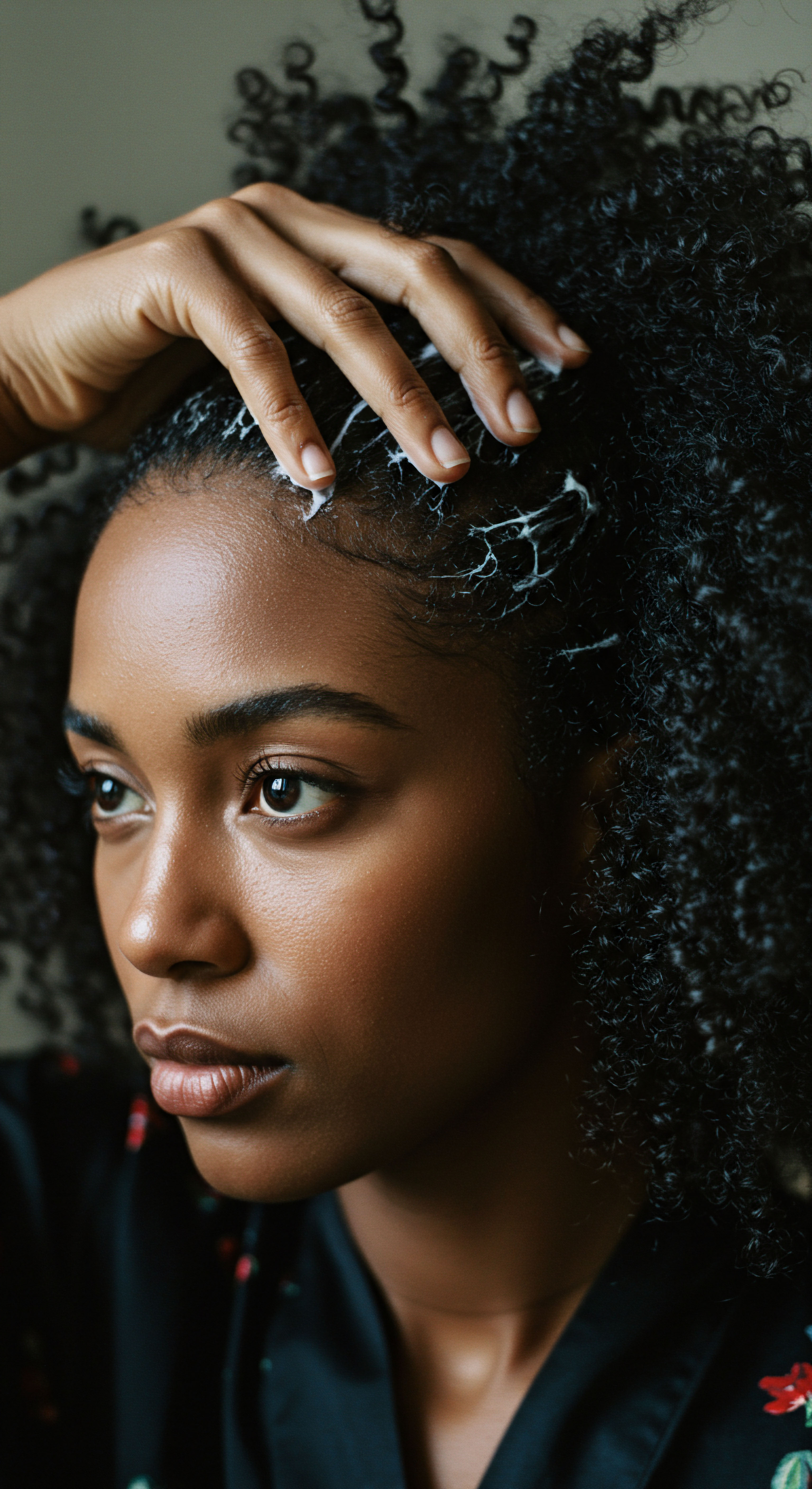
Ritual
As we step beyond the foundational understanding of the scalp, our gaze turns to the practices, both deliberate and habitual, that shape our hair’s daily existence beneath a covering. The choices made in styling, the materials selected, and the rhythms of care all contribute to the narrative of scalp comfort or discomfort. This section explores the practical wisdom that guides our interaction with textured hair and head coverings, offering pathways to greater harmony.
The tradition of head coverings, spanning cultures and centuries, carries profound significance, symbolizing faith, identity, and modesty. For many, these coverings are not merely accessories but extensions of self and heritage. Understanding this deep cultural context is vital, as it informs the approach to care, recognizing that practical adjustments must often align with deeply held beliefs. The journey to serene strands, then, becomes one of informed choices and mindful routines, where the science of hair health meets the artistry of personal expression.

Styling Choices and Scalp Stress
The manner in which hair is prepared before donning a head covering holds significant sway over scalp sensation. Tight hairstyles, such as buns, braids, or ponytails, can exert constant tension on the hair follicles. This sustained pulling can lead to a condition known as Traction Alopecia, where the hair loss results from mechanical stress on the follicles. Individuals with textured hair, particularly those of African descent, may experience a heightened susceptibility to traction alopecia, partly due to the structural characteristics of their hair follicles, which possess fewer elastic fibers connecting them to the dermis compared to other hair types.
- Tightness ❉ Ensure hairstyles beneath head coverings are loose, preventing undue tension on hair roots.
- Placement ❉ Vary the position of buns or knots to distribute pressure evenly across the scalp, avoiding repetitive stress on specific areas.
- Frequency ❉ Limit the duration of tight styles, allowing the scalp and follicles periods of relief and recovery.
The weight of long or dense hair, when gathered tightly, can also contribute to this mechanical strain. It is a delicate balance, preserving cultural styles while safeguarding the scalp’s integrity. Adjustments can often be subtle yet effective, such as opting for looser updos or changing the placement of secured hair to distribute the pressure.
Mindful styling choices beneath head coverings can significantly reduce mechanical stress on the scalp and follicles.

Material Matters and Breathability
The fabric of a head covering directly influences the microclimate it creates around the scalp. Synthetic materials, while sometimes visually appealing, often lack the breathability of natural fibers. They can trap heat and moisture, leading to increased sweating and a damp environment that encourages microbial proliferation. This can exacerbate conditions like dandruff, which thrives in warm, humid conditions with an overgrowth of yeast.
Conversely, natural materials like Cotton or Silk offer better airflow and moisture-wicking properties, allowing the scalp to breathe more freely. Silk, in particular, is known for its smooth surface, which reduces friction against hair strands, potentially minimizing breakage and irritation. Choosing a breathable lining or underscarf made of natural fibers can also provide a protective barrier between the hair and a less breathable outer covering.
| Material Type Synthetic Fabrics (e.g. polyester, nylon) |
| Scalp Impact Traps heat and moisture, poor airflow, increases sweat and microbial growth. |
| Recommendation Limit use, especially for prolonged periods; pair with breathable lining. |
| Material Type Natural Fabrics (e.g. cotton, silk) |
| Scalp Impact Allows airflow, wicks moisture, reduces friction. |
| Recommendation Preferred choice for daily wear; consider silk linings for added hair protection. |
| Material Type Wool (in colder climates) |
| Scalp Impact Provides warmth but can cause friction and overheating if too tight. |
| Recommendation Ensure loose fit; use a smooth, natural fiber lining. |
| Material Type Selecting appropriate materials can significantly enhance scalp comfort under head coverings. |

Routines of Care and Scalp Hygiene
Maintaining a consistent and appropriate scalp care regimen becomes even more paramount when head coverings are part of one’s daily life. The enclosed environment can lead to an accelerated buildup of oils, sweat, and product residue, necessitating regular cleansing. However, the frequency and method of washing are equally important. Over-washing with harsh shampoos can strip the scalp of its natural oils, leading to dryness and irritation, while infrequent washing can allow buildup to accumulate, fostering an unhealthy microbial environment.
Using gentle, sulfate-free shampoos and conditioners designed to balance the scalp’s pH is a wise approach. Hydration is also a silent hero in scalp care; drinking plenty of water supports overall skin hydration, including the scalp. Furthermore, incorporating scalp massages can stimulate blood circulation, which nourishes hair follicles and helps release natural sebum, promoting a healthy scalp environment. These simple, intentional practices contribute to a serene scalp experience, allowing hair to thrive even when covered.
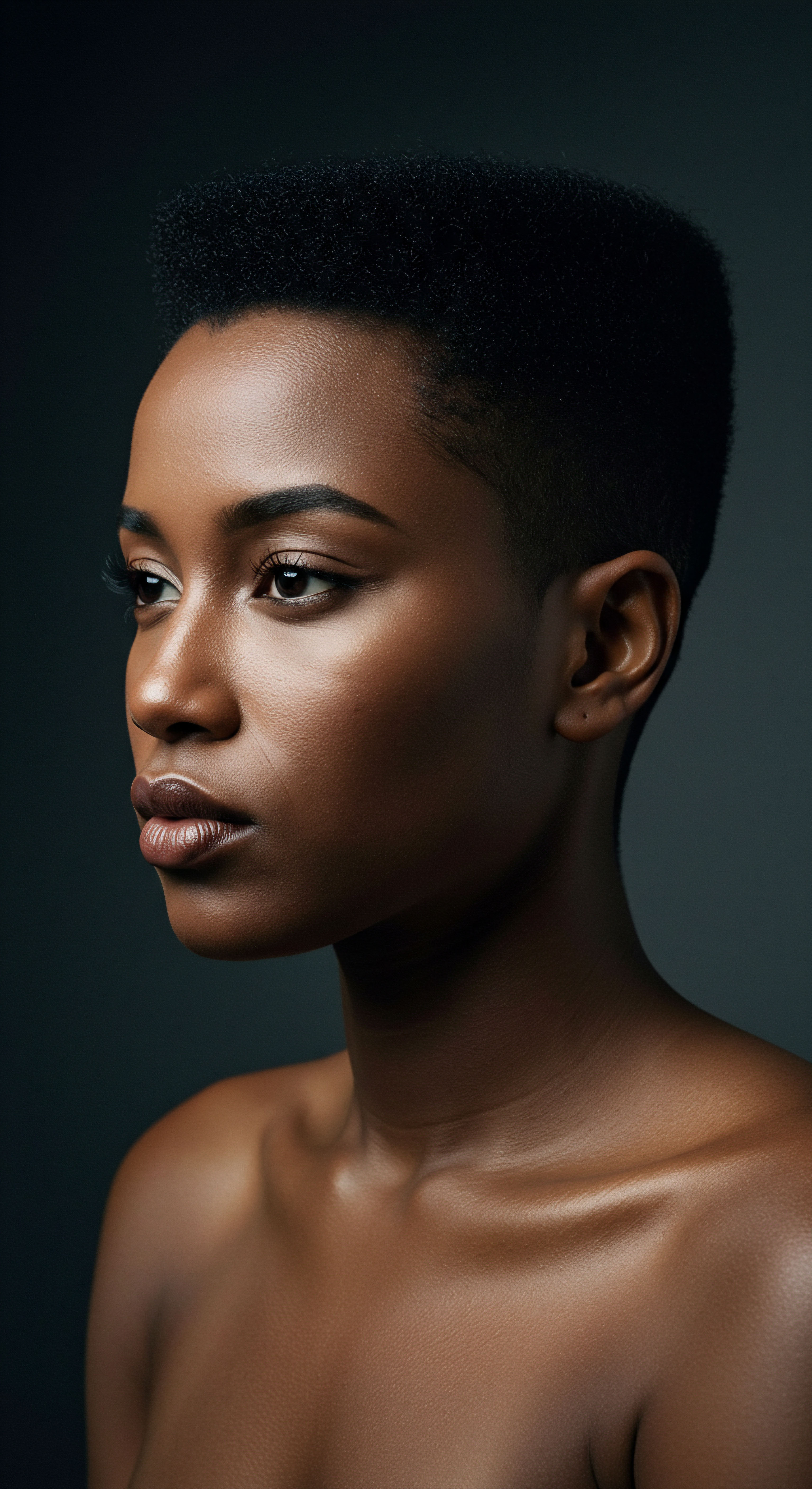
Relay
To truly comprehend the delicate sensitivities that can arise beneath head coverings, we must venture beyond surface observations and delve into the profound interplay of biological, cultural, and contextual elements. This segment explores the deeper currents that influence scalp health, revealing the scientific underpinnings and broader societal considerations that shape this often-overlooked aspect of well-being.
The human scalp, with its intricate biological systems, responds dynamically to external stimuli. When consistently enveloped by a covering, a cascade of physiological adjustments begins. This adaptation, while often unnoticed, can sometimes tip the scales towards discomfort, especially when predispositions are present.
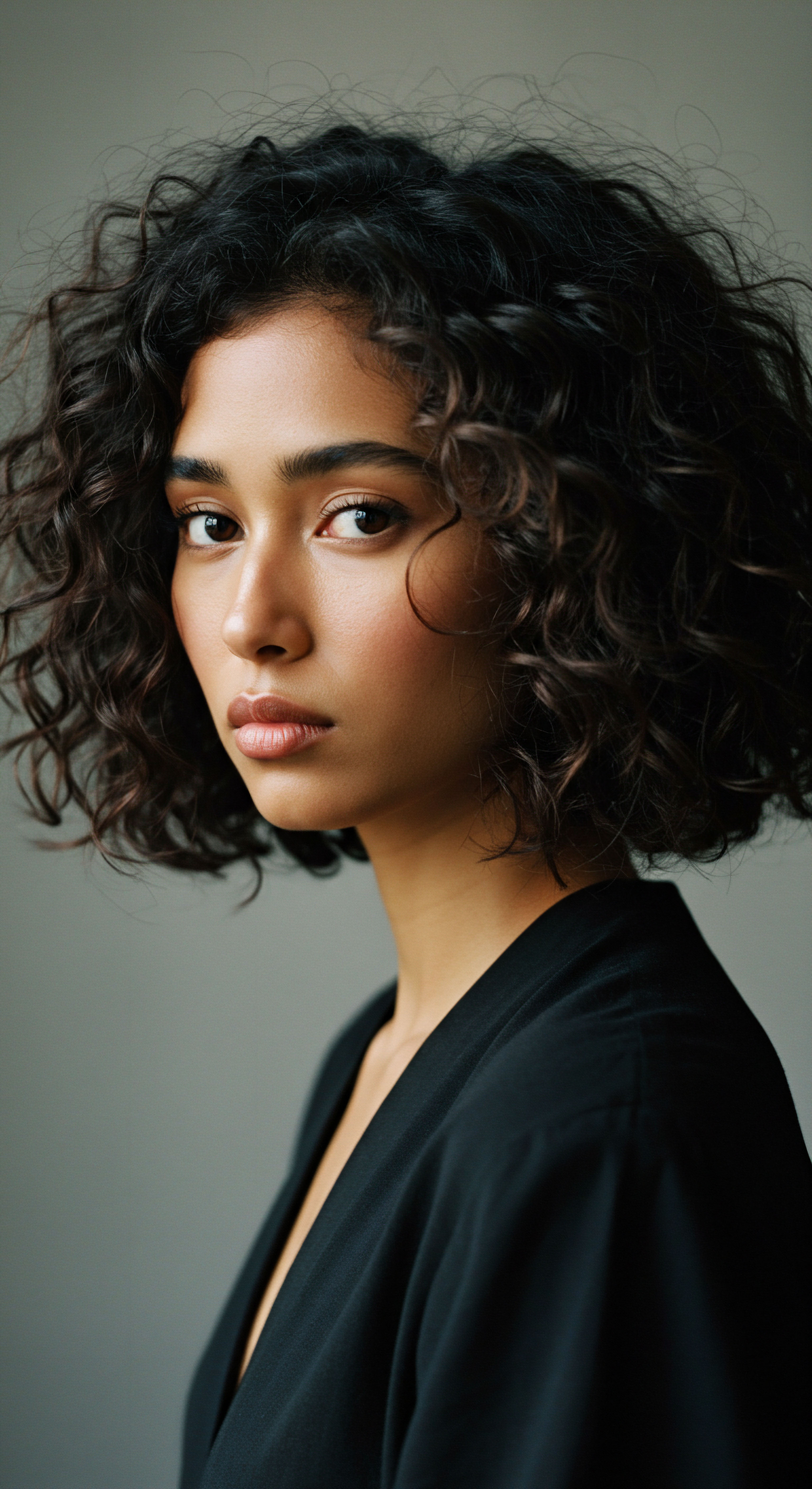
How Do Environmental Shifts Affect Scalp Physiology?
The microclimate created by head coverings—characterized by increased temperature and humidity—can significantly impact several physiological processes of the scalp. Elevated humidity, for instance, impedes the natural evaporation of sweat, leading to a buildup of moisture. This persistent dampness, coupled with warmth, creates an ideal breeding ground for the overgrowth of naturally occurring microorganisms like Malassezia globosa, a yeast strongly associated with dandruff and seborrheic dermatitis. The byproducts of these microbial activities, such as oleic acid, can trigger inflammatory responses on the scalp, resulting in itching, flaking, and tenderness.
Beyond microbial shifts, sustained humidity can also soften the skin barrier, potentially making it more permeable and susceptible to irritation from external factors or even internal imbalances. This can manifest as microinflammations, subtle cellular responses that contribute to overall scalp sensitivity, even if not immediately visible. The scalp’s sebaceous glands may also respond to this humid environment by altering sebum production, which can lead to either excessive oiliness or paradoxical dryness, further disrupting the scalp’s protective mantle.

What Role Do Genetic and Hormonal Factors Play?
Individual predispositions, rooted in genetics and hormonal fluctuations, significantly modulate how one’s scalp responds to head coverings. Genetic factors can influence the inherent sensitivity of hair follicles and the scalp’s immune response. For example, a genetic inclination towards conditions like androgenetic alopecia can mean hair follicles are more sensitive to hormonal changes, potentially exacerbating hair thinning in response to added stress from headwear. Similarly, a predisposition to skin conditions such as eczema or psoriasis can mean the scalp is inherently more reactive, making it more prone to flare-ups when subjected to the altered environment under a covering.
Hormonal shifts, whether due to puberty, menstrual cycles, pregnancy, or menopause, profoundly influence scalp health. These fluctuations can alter sebum production, affecting the scalp’s oil balance and its susceptibility to dryness or oiliness. An increase in stress hormones, particularly cortisol, can also lead to inflammation and heightened scalp sensitivity. The combination of an already sensitive scalp due to internal hormonal shifts and the external conditions imposed by a head covering can create a challenging scenario for scalp comfort.
The weight of dreadlocks, a significant cultural hairstyle for Rastafarian men, when tied or wrapped under a head covering, can contribute to traction alopecia. This is a powerful illustration of how the interplay between hair type, styling practices, and the presence of a head covering can impact scalp health.
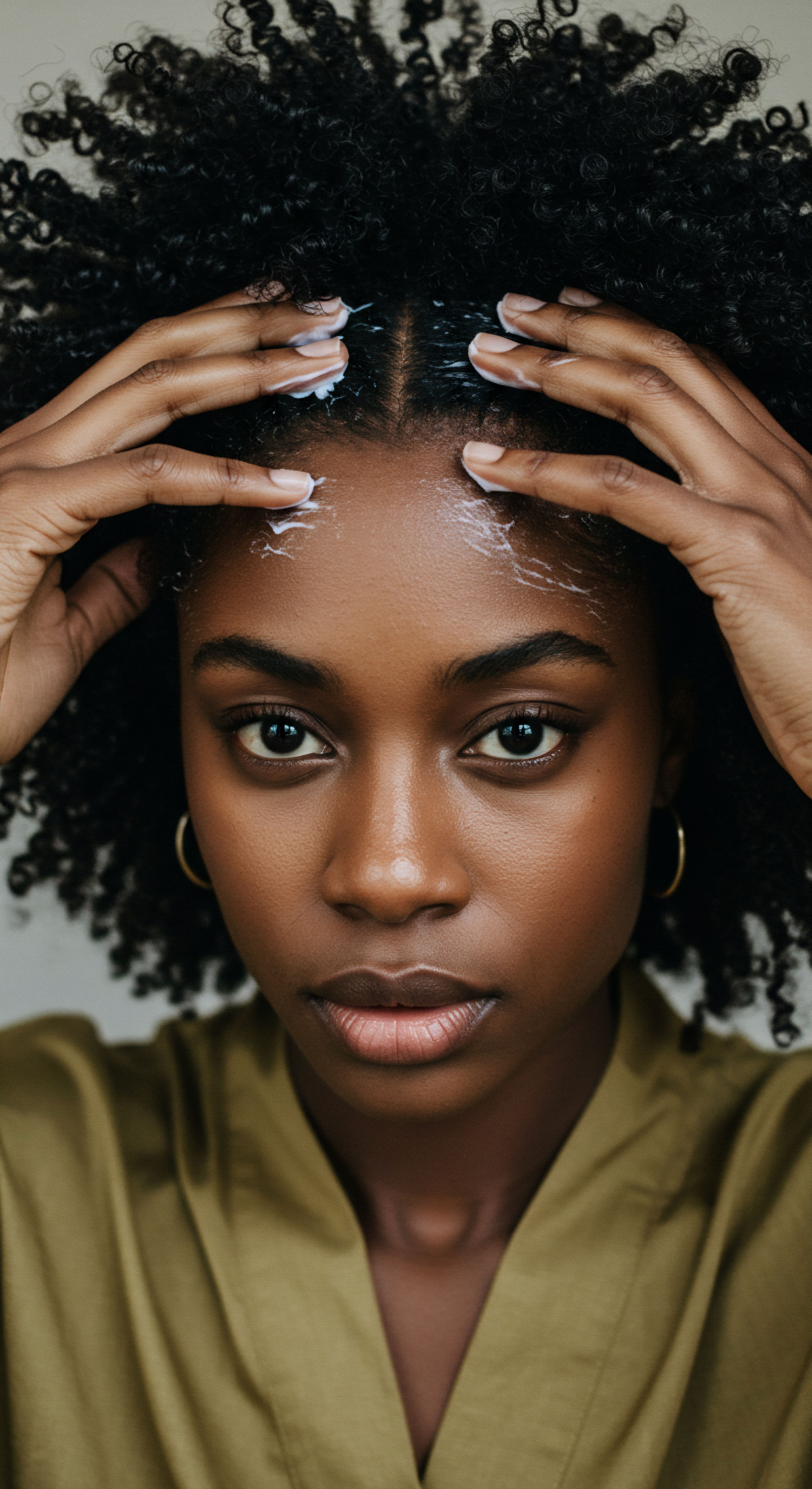
Considering the Cultural and Psychosocial Dimensions?
The practice of wearing head coverings extends far beyond mere physical adornment; it is often deeply interwoven with religious observance, cultural identity, and personal expression. For many, the choice to cover one’s head is a sacred commitment, reflecting modesty, spiritual devotion, or a connection to ancestral heritage. Recognizing this profound significance is paramount when addressing scalp sensitivity in these contexts.
The psychosocial impact of scalp discomfort, particularly when it affects hair, can be substantial. Hair often serves as a significant aspect of personal identity and self-perception. Experiencing symptoms like itching, flaking, or hair thinning under a head covering can lead to distress, affecting confidence and quality of life. The challenge for individuals and healthcare providers lies in finding solutions that respect cultural practices while addressing dermatological concerns.
This may involve exploring alternative materials for coverings, adjusting styling techniques, or implementing targeted scalp care routines that align with personal beliefs and daily life. The conversation surrounding scalp sensitivity with head coverings must always proceed with cultural humility and a genuine understanding of its multi-layered meaning.
- Cultural Significance ❉ Acknowledge the deep cultural and religious meanings behind head coverings, ensuring solutions respect personal values.
- Psychological Well-Being ❉ Understand that scalp issues can affect self-esteem and overall comfort, offering empathetic support alongside practical advice.
- Adaptive Solutions ❉ Collaborate to find hair care practices and material choices that accommodate both scalp health and cultural or personal requirements.

Reflection
The journey into understanding scalp sensitivity with head coverings reveals a landscape of intricate connections, where the unseen world of microbes meets the profound narratives of culture and personal well-being. It asks us to look beyond the obvious, to listen to the quiet messages our bodies send, and to seek harmony in the delicate balance between tradition, science, and individual care. The path to a serene scalp, then, becomes a testament to thoughtful inquiry and gentle attunement, recognizing that every strand and every sensation holds a story waiting to be heard.
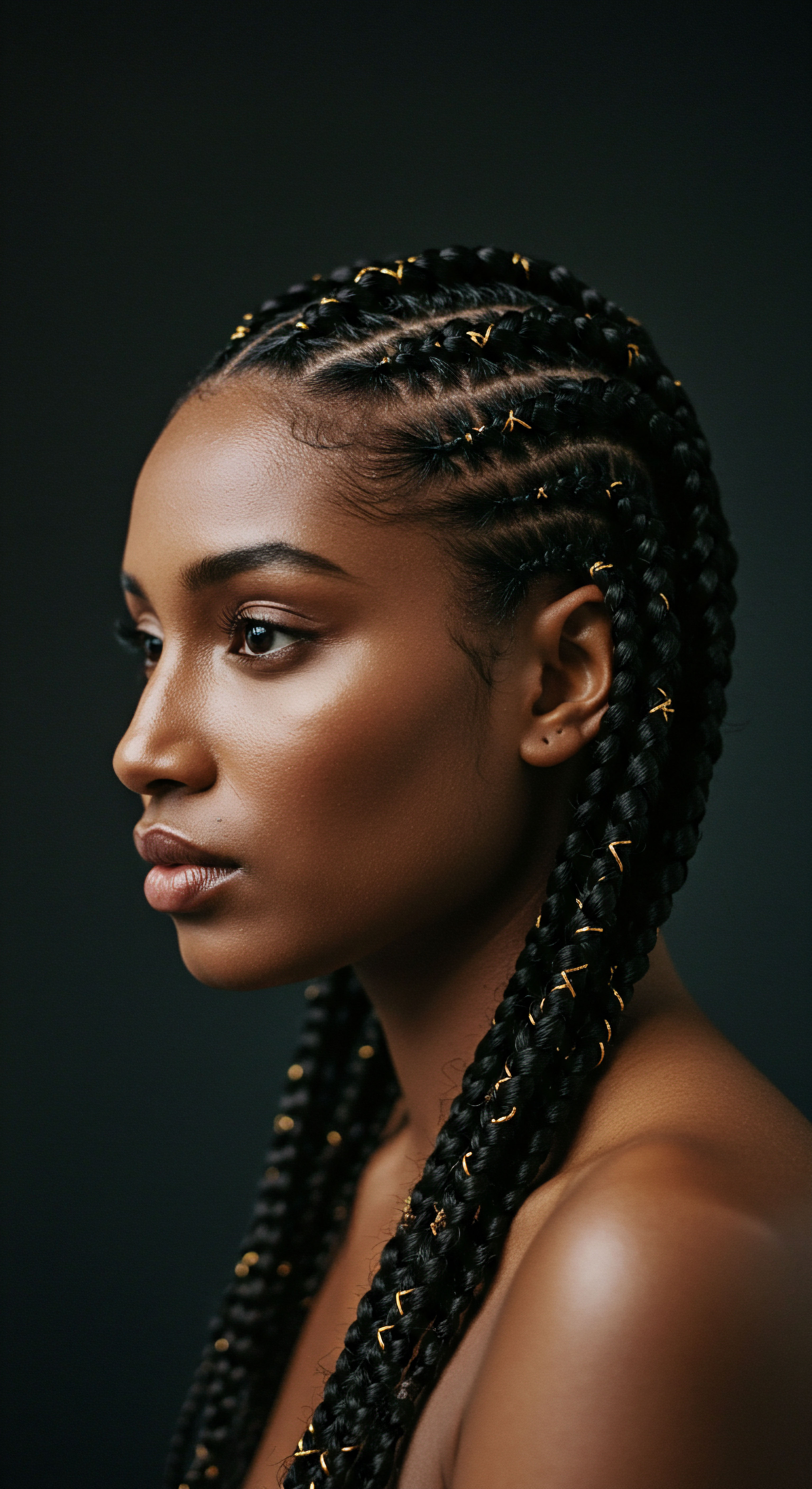
References
- Alhanshali, A. et al. “Religious headwear and alopecia ❉ considerations for dermatologists.” International Journal of Women’s Dermatology, vol. 9, no. 3, 2023, e107.
- Alhanshali, A. et al. “Considerations for Preventing and Addressing Alopecia in Patients With Religious Headwear.” Dermatology Times, 20 Sept. 2023.
- Shareef, M. et al. “Understanding perceptions of hair loss in hijab-wearing women ❉ a pilot survey study.” International Journal of Women’s Dermatology, vol. 9, no. 4, 2023, e107.
- TrichoLab. “Your Guide to Sensitive Scalp ❉ Causes and Treatments.” TrichoLab.com.
- WebMD. “What Your Hair & Scalp Say About Your Health.” WebMD.com, 5 June 2024.
- Assure Clinic. “Exploring the link between hair coverings and hair loss.” AssureClinic.com.
- British Skin Foundation. “Traction alopecia.” BritishSkinFoundation.org.uk.
- Nori, M. “Impact of Environmental Stressors on Hair.” NYSCC.org, 12 July 2021.
- Clareiy, T. “Scalp Health and Disease Prevention ❉ The Role of Nutrition and Lifestyle Factors.” Journal of Dermatology and Cosmetology, vol. 7, no. 1, 2023, pp. 1-4.
- Hårklinikken UK. “How Hormones Affect Your Hair.” Harklinikken.co.uk.
- Dermal Therapy. “More Common Causes of Itchy Scalp and How to Manage Them.” DermalTherapy.com, 1 Apr. 2025.
- RemoteDerm. “Understanding Sensitive Scalp & Scalp Pain ❉ Symptoms, Causes, and Treatments.” RemoteDerm.com, 10 Feb. 2025.
- Enticare. “Can Allergies Cause Itchy Scalp? Causes, Symptoms & Relief.” Enticare.com, 10 Feb. 2025.
- Oatlands Aesthetics. “Poor Scalp Health – Causes and Treatments Near Me.” OatlandsAesthetics.com.au.
- DrOmics Labs. “The Genetics of Hair Follicle Sensitivity ❉ Understanding the Role of Genetics in Hair Loss.” DrOmicsLabs.com, 12 June 2024.
- Hair Transplant Glojas. “Causes Of Scalp Fungus.” HairTransplantGlojas.com.
- Hims. “Scalp Yeast Infection ❉ Symptoms & Causes.” GoodHealthbyHims.com.
- Aromaganic. “Scalp Health ❉ Why It Matters and How to Maintain It.” Aromaganic.com.au.
- Healthline. “Simple Secrets to Healthier, Fuller, Shinier Hair.” Healthline.com.
- Philip Kingsley. “Scalp health ❉ A hair doctor gets to the root of your problems.” PhilipKingsley.co.uk, 6 Jan. 2021.
- Penny James Trichology. “A Guide to Scalp Microbiome.” PennyJames.com, 3 July 2023.
- Mosu Hair Space. “Scalp Health // Maintaining a Healthy Scalp.” MosuHairSpace.com, 21 Apr. 2025.
- OLAPLEX. “These Factors May Affect Your Scalp’s Health.” Olaplex.com, 14 Jan. 2023.
- Hello Jupiter. “10 Tips on How to Protect Your Hair From the Summer Heat.” HelloJupiter.com, 11 July 2023.
- Head & Shoulders UK. “A Dandruff Sufferer’s Guide to Hats ❉ Tips and Advice.” HeadandShoulders.co.uk.
- Malassezia. “Scalp Microbiome Explained ❉ What’s Living on Your Scalp and Why It Matters.” Malassezia.org, 16 May 2025.
- Byrdie. “14 Ways to Moisturize Your Scalp Effectively, According to Experts.” Byrdie.com, 25 Feb. 2025.
- Canadian Skin Patient Alliance. “Hijab Hair Health Infographics.” CanadianSkin.ca.
- Alhanshali, A. et al. “Factors and practices associated with deteriorating scalp conditions amongst headscarf-wearers ❉ A national-level cross-sectional study.” ResearchGate, 26 Nov. 2024.
- Try, T. “Why is women’s hair so important in so many religions?” ScienceNorway.no, 22 Feb. 2025.
- Turbie Twist. “Head Wraps and Culture ❉ What You Need to Understand.” TurbieTwist.com.
- Yun, B. et al. “Bacteria Display Differential Growth and Adhesion Characteristics on Human Hair Shafts.” PLoS ONE, vol. 13, no. 9, 2018, e0203106.
- Courage+Khazaka Inc. “Estimating Scalp Moisture in a Hat Using Wearable Sensors.” MDPI.com, 22 May 2023.
- NIH. “Genetic linkage studies in alopecia areata.” PubMed.gov.
- The Hair & Scalp Clinic. “Hair Conditions.” TheHairandScalpClinic.co.uk.
- Dallas Hair Restoration. “Unravel The Mystery Of Hair Loss & Scalp Problems Dallas Tx.” DallasHairRestoration.com.